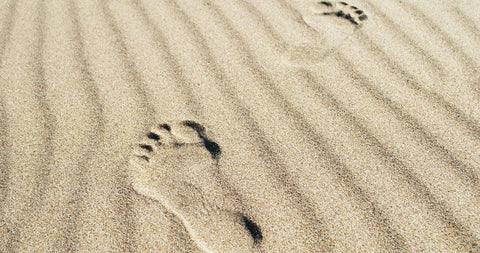
How to Treat Ankle Pain and Sprains
All about ankle pain and sprains
A sprained ankle is one of the most common types of injuries doctors see.1 Alongside being painful and swollen, it may be hard to move the foot properly.1 The good news is that there is a lot of self-care advice out there to help, and most injuries can heal well by themselves within several months.2
What are sprains and injuries?
A sprain happens when you injure one or more of the ligaments around your joint. Ligaments are bands of fibrous tissue that connect one bone to another and support your joints. Ankle sprains occur when the foot is twisted beyond its normal motion, overextending or tearing the ligament in the process.2
Strains, sometimes referred to as a pulled muscle, can also occur when foot muscles have been overstretched or torn.3
What are the symptoms?
Symptoms of a sprain or strain will depend on the severity of the injury, but can include:2
- Pain and tenderness
- Swelling
- Bruising
- Difficulty putting weight on your foot
- Instability around the ankle
- A popping or tearing sound when the injury happens
- Muscle spasms or cramping
What causes sprains and injuries?
Sprains and strains happen when too much force is applied to a muscle. Carrying out weight-bearing activities, physical activities beyond your ability, and failing to properly warm up before exercise can all increase the risk of damage.
Top tips for avoiding and managing sprains and injuries
You can self-manage most sprains and strains by taking a PRICES approach in the first 48-72 hours after injury (Protect, Rest, Ice, Compression, Elevation and Support) and avoiding HARM (Heat, Alcohol, Running, and Massage).
The ‘prices' approach to treatment4
- Protect from further injury. Use a support sock or wear high-top footwear that supports the ankle
- Rest the affected joint for 48-72 hours
- Ice the injury site as soon as possible and for 15-20 minutes every few hours, for up to three days
- Compress the area with a bandage to limit swelling, making sure the bandage isn’t too tight
- Elevate your injury to help reduce any swelling
- Support the area after the initial stages to further aid recovery and repair
To help prevent harm avoid the following5
-
Heat from hot baths, saunas and heat packs for 72 hours.
-
Alcohol - as it can encourage bleeding, swelling and slow down healing time
-
Running or any other physical activity that could further damage the injury
-
Massage for the first 72 hours, as it could increase bleeding and swelling
You should seek further medical advice if:
- The above advice and treatments don’t work
- The pain or swelling gets worse
- You have a high temperature or feel hot and shivery.
